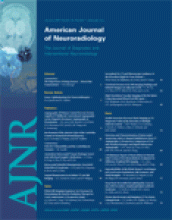R. Pinaud, L.A. Tremere, and P. De Weerd, eds. New York: Springer: 2006. 364 pages, $129.
The discoveries of David Hubel and Thorsten Wiesel in the 1960s have had an enormous impact in neuroscience. Their studies revealed that the visual cortex of mammals has a high degree of plasticity in the early postnatal period. If during this period 1 eye is sutured even for a few days, the visual cortex undergoes a dramatic reorganization and vision may be permanently impaired. The central nervous system retains a considerable degree of plasticity even during the adult stage. Understanding the mechanisms of brain plasticity after sensory experience, during learning and memory, and remodeling after lesions or degeneration may have huge clinical and social relevance.
Plasticity in the Visual System from Genes to Circuits, by Raphael Pinaud, Liisa Tremere, and Peter De Weerd (eds), gives an update of recent developments trying to integrate the molecular basis of visual plasticity with changes in neuronal activity and morphology. The book is divided in 3 parts. In “Part I,” 5 chapters are devoted to retinal and thalamic plasticity. This is an important issue because subcortical plasticity is less often studied and may explain some of the changes occurring at the cortical level. Three chapters treat structural neurochemical and functional aspects of retinal plasticity induced by degeneration and retinal detachment/reattachment. Two chapters deal with experience-dependent expression of immediate early genes at the retina and thalamic level. In “Part II,” 8 chapters are dedicated to visual cortical plasticity. Two chapters discuss the effects of neuromodulatory transmitters and inhibition on normal sensory processing and during experience-induced plasticity. Two chapters focus on the molecular, biochemical, and cellular mechanisms that participate in the control of plasticity. Three chapters are dedicated to plastic rearrangements occurring after retinal lesion, after perceptual learning, and after cognitive functions. One chapter combines molecular approaches and systems neuroscience to deal with changes induced by associative learning. In “Part III,” 2 chapters try to provide a theoretic framework for neuronal plasticity by using computational modeling or molecular approaches.
The book appears to be primarily written for graduate students and visual neuroscientists, including perceptual psychologists and computational modelers, who use different approaches to tackle the problem of brain plasticity, using the visual system as a model. The book tries to provide a coherent picture of visual system plasticity, and several important laboratories contributed to this goal. Giving a comprehensive picture, however, adds a further challenge because the field of cortical plasticity is very large. “Part I,” which deals with the retina, seems more inclusive than “Part II,” which deals with visual cortex. In “Part II,” one would expect to find some contribution of several major laboratories that are very active in the field. In particular, techniques such as long-term potentiation/depression have been virtually ignored, and the role of molecules such as neurotrophic factors in modulating brain plasticity has not been given adequate weight.
The “Preface” promises suggestions on “future application of research findings from neural plasticity in the visual system with an emphasis on potential clinical uses and engineering within the biomedical sciences.” This would have increased the relevance of this book for the neuroradiology audience, in particular if these topics were associated with neuroimaging of restorative plasticity. Unfortunately, these topics are not covered. Additional information linking plasticity to neuroimaging can be found in Plasticity in the Human Nervous System: Investigations with Transcranial Magnetic Stimulation, by Simon J Boniface and Ulf Ziemann (eds) (Cambridge University Press, 2003). Suggestions on the link between genes and possible neurotherapies can be found in Plasticity in the Adult Brain: From Genes to Neurotherapy (Progress in Brain Research), by M.A. Hofman, G.J. Boer, A.J.G.D. Holtmaat, et al (eds) (Elsevier, 2001).
Overall, Plasticity in the Visual System from Genes to Circuits, despite its intrinsic limitations, is a useful complement for the neuroradiology audience because it provides insight on molecular mechanisms that underlie plasticity at different levels of the visual pathway.

- Copyright © American Society of Neuroradiology












